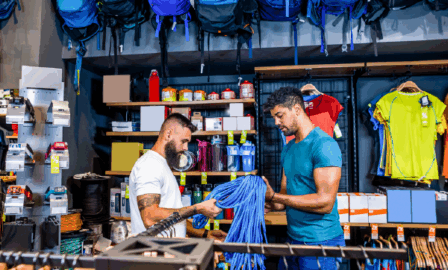Five Considerations for Direct-to-Consumer Logistics
In recent years, we’ve seen companies increasingly look to the direct-to-consumer (DTC) space. While the DTC trend certainly isn’t new, the need for companies to establish an online presence to better engage with and respond to ever-changing consumer needs and expectations has certainly catalyzed efforts to invest and expand in the DTC space.
During the pandemic, in particular, the consumer retail experience fundamentally shifted – and it seems to be sticking, as more and more retailers are establishing or expanding their DTC strategy. Clarkston’s Steve Rosenstock, partner and CP industry lead, and Evan Shirley, Client Solutions Partner, presented at FoodLogiQ’s Virtual reCONNECT 2022 Conference in April 2022 on the growing DTC space and what companies need to know to be successful in their DTC strategy.
Direct-to-Consumer Logistics
The logistics of DTC – either in transitioning into or adopting a DTC business model – can be quite challenging. For many companies, the logistical challenge is the shift in how they do business.
Products once produced in large quantities and shipped on giant pallets to one location are now being produced in smaller quantities and distributed to individual consumers. This shift, coupled with other adjustments in production, manufacturing, and shipping, can be overwhelming for businesses looking to make the shift to DTC.
When thinking of how to evolve your DTC distribution strategy compared to a traditional brick-and-mortar approach, companies must reconsider their fundamental assumptions about their business. Below are five considerations for direct-to-consumer logistics:
- Operational complexity. Separate out the operational complexity of a high volume of smaller orders versus a low volume of larger orders. Where should you start?
- Pack sizes. Pack sizes become important depending on what you’re selling. If there’s a new pack size to make a new level of inventory, that can make things complex. You want to make sure you’re ready for that and think through what the operational steps are to create sellable packs for DTC.
- Inventory allocation. If you stock out on your website, how important is that to you relative to stocking out for a retailer? If a consumer comes directly to you and you don’t have the product, you’ll lose out on the sale. If you’re shorting a retail order between your sales and logistics team, you need to understand what that response looks like and identify the appropriate steps to take.
- Replenishment cycles. If you’re using a single DC or 3PL, you need to consider how the cycles work between the two. You need a cross-functional team around to not only think about the supply chain implications, but also the implications to the consumer and on the sales front.
- Tailoring logistic capabilities. Now that you’re selling across multiple channels, there are considerations you haven’t had to think about previously, such as last-mile delivery, returns, reverse logistics, traceability and tracking, and more.
If you’re interested in learning more about direct-to-consumer logistics or how to best navigate the transition to a DTC business model, reach out to us today.
Subscribe to Clarkston's Insights




